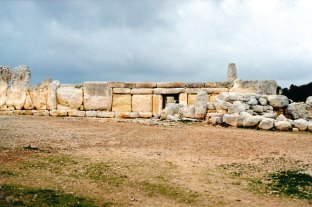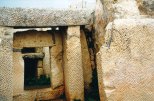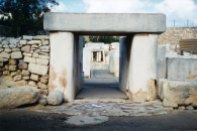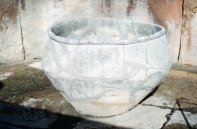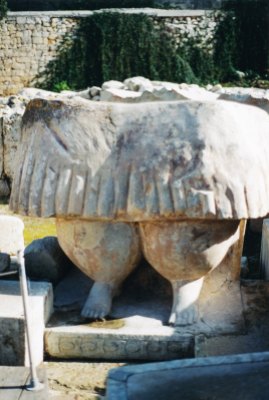In 1999 I visited the fascinating island of Malta with my then boyfriend (now husband), dragging the poor lad around more archaeology than he had seen in all his life…
Whilst there is a huge amount of archaeology in Malta, from all periods in time, it was the megalithic monuments which caught my attention during this trip. Not to mention we only had a week on the island and you would probably need a whole lot more time to visit all the archaeological sites Malta has to offer.
Unfortunately at the time of our visit the Hypogeum or Hal Saflieni was closed for some desperately needed love and attention – much to my disappointment.
It is believed the first human inhabitants of Malta came from Sicily in the Neolithic. This early phase is named for the site that epitomises this time – Ghar Dalam, a cave site in the south of the island. This early phase begins approximately 5000BC and ends with the first temples being built around 4100BC. The Temple Period is divided into four phases.
Zebbug – 4100-3700BC
Mgarr – 3800-3600BC
Safliene – 3300-3000BC
Tarxien – 3150-2500BC
The temples for which the first two phases are named have now disappeared either under the urban sprawl of Valetta or as is the case of Mgarr subsumed into the backstreets of the town itself. The Safliene phase is characterised by Hal Safliene (Hypogeum), a subterranean temple carved out of the limestone bedrock to accommodate 7000 dead.
The final Tarxien phase is the one visitors to Malta will be most aware of. The temple complexes of Tarxien, Mnajdra, Hagar Qim on Malta and Ggantija on Gozo constitute the climax of the temple building phase.
Although the temples complexes span quite a period of time they do have some common features in terms of the architecture. To begin each will have a oval forecourt bounded by the temple facade constructed of large stone slabs. The doorways all consist of two large uprights topped with an equally large lintel. The passageways are always paved. Once inside the complex, the visitor finds themselves in an open area which then gives way to a series of D-shaped chambers or ‘apses’.
The main variation from one site to another is the number of ‘apses’. Often the walls of the temples are decorated with carvings in relief of spirals and naturalistic forms of plants and animals. Cup marks are also a popular form of decoration.
Here are some of the photos of this trip.
Further sources of information:
The Megalithic European by Julian Cope
Megalithic Temples of Malta – Wikipedia




